Prichard,
Frank and Helen.
One of the last families to move
from the area. As they got in their truck to leave, an Army Sgt.
threw a burning torch inside the house to burn it down. They
eventually bought 80 acres in Shelby County south of Bengal.
They received $150 per acre for their farm land and house. Both
are deceased (2000).
Email the Webmaster Here

Alva Milnes Farm

Coy Farmhouse

Dinn Family of Kansas

Elisha DeHart Log Home

George Stillabower Home

Herman Johnson Farm & Family.
Note the paper on the tree behind them. It is the "Vacate" Notice
Camp Atterbury Native Remembers 70 Years of Post History

The Japanese attacks on Pearl Harbor in 1941 lit the fuse which kicked the War Department’s plans for a central Indiana Army camp into action. An estimated 600 families were uprooted from their sleepy, 100-year-old farm towns of Kansas and Pigsah, and forced to sacrifice their land for a greater good; victory over the Axis Powers in Nazi-occupied Europe and the Japanese Empire in the Pacific.
One such man, Herman Johnson, now 87-years-old, made this sacrifice, but he didn’t move far. He was born, Feb. 26, 1923, and raised during the Great Depression on what is now today’s 92nd Division Street at Camp Atterbury. Perhaps it was convenience, stubborn nature or maybe just fate that drove Johnson to pack his things and moved a few hundred yards up the road when his family’s property was condemned in 1942. He still resides today in that same home today just outside the camp’s razor-wire fence.
From his Bartholomew County home, he witnessed the quiet countryside he grew up on turn into a large military post, producing hundreds of thousands of combat-ready troops. He watched as the “War to End All Wars”, was followed shortly by the Korean War. He watched the post lay almost dormant in subsequent years when the Department of the Army turned the post over to the Reserves. He watched the camp spring into action again after the terrorist attacks on 9/11. Johnson has lived at Camp Atterbury’s doorstep for more than 65 years and continues to watch history being made.
“Atterbury’s been about 90 percent of my life,” said Johnson laughing, “I just can’t seem to get away from it.”
As a younger man, Johnson worked at a factory cutting sheet metal when the government condemned his home. Nevertheless, he still attempted to enlist in the military, but was denied because of medical reasons. After moving into his new house up the road, he sought work with the war effort at Camp Atterbury, helping build new complexes for the influx of Soldiers to come.
“They wanted to get this camp built,” said Johnson. “Anyone who could drive a nail or saw a board, they hired them. And they worked daylight ‘till after dark, seven days a week.”
Between February and August of 1942 more than 1,700 buildings were constructed for the oncoming surge. On June 2, 1942, Camp Atterbury Headquarters cut its first order, rendering the post operational.
Johnson found work there with the Civil Service as a truck driver for the post motorpool, the beginning of an ongoing working relationship with the camp.
“The first vehicle I drove up here was a ton-and-a-half Ford truck,” said Johnson. “It was painted olive drab. One day I looked at the grill of the truck and saw something shiny. I knew Army vehicles weren’t supposed to have anything shiny on them so I took my fingernail and scratched at it and the paint chipped right off. I could see chrome.
“Well, I kept going and after about a week and a half I had the first ever Army truck with an all-chrome grill,” Johnson said, laughing. “See, what it was, was the Army needed vehicles so bad they bought civilian vehicles right off the assembly line and slapped G-I paint on them. [The grill] didn’t last very long cause boy after my first inspection they slapped more paint on it.”
Working as a truck driver he hauled everything from barbed wire to chlorine water purification cylinders. He hauled welding equipment for ongoing construction and he hauled oxygen tanks for the post’s medical facility, Wakeman Hospital, one of the largest, most technologically advanced hospitals in the nation at that time. But Johnson’s bread and butter came from working at the post Bakery and Officer’s Club.
Johnson had his first interaction with enemy prisoners of war in this job, as more than 15,000 German and Italian POWs poured into the camp’s POW compound. Although fraternization was explicitly forbidden, many POWs held jobs throughout the camp, making it difficult to avoid direct contact with them.
Johnson worked directly with German POWs, as a handful was assigned to help him load and unload his truck.
“I didn’t speak a word of German,” said Johnson smiling. “They couldn’t tell a crate of butter that goes in the refrigerator from a crate of beans that go in the pantry. [The German prisoners] couldn’t pronounce my name. They’d call me “human.” They’d ask “was ist das, human” or ‘what is this?’
“If I goofed up, they’d tell me something in German,” continued Johnson, laughing. “They could’ve been givin’ me a mouth full of cuss words but I’d never have known it!”
He built lasting relationships with the officers at the officer’s club and they gave him more responsibility. He would travel 40 miles each way to Indianapolis and back hauling food and supplies. This was no easy task due to the governments rationing sanctions set on the nation.
“Food was rationed, gas was rationed, the shoes on your feet were rationed, hell, even the speed was rationed,” said Johnson. “If you were traveling to Indianapolis or Chicago or Louisville, the speed limit was 35 miles an hour to get better gas mileage and to save the tires on your vehicle.”
During trips in Indiana’s icy winter, Johnson would wrap all of his produce and supplies in heavy Army blankets to keep them from freezing. His safe driving and reliable hauling secured him a job at the camp until after the war.
Johnson recalls the abrupt end of the war in Japan.
“The [atomic] bomb dropped and everyone went crazy,” said Johnson. “I was in the officer’s club and I heard someone screaming. He came running through the French doors with both fists in the air, hollering. I thought he was throwing a fit. ‘It’s over!’ he said ‘It’s over!’ He was yelling that the war was over.”
A convalescent home was being built to add more beds to the already huge 9,000-bed Wakeman Hospital which was overflowing with wounded at the time. “When the carpenters heard the news they threw their tools up in the air and left,” said Johnson.
“We all thought it was great,” Johnson continued. “It only took two bombs to end the whole war. We didn’t know we’d be still indirectly fighting over nuclear energy today.”
The flow of troops continued through Camp Atterbury after the war was over. It was transformed into a “separation center” to discharge and out-process returning Soldiers from overseas.
“The war ending was a huge relief on everyone,” said Johnson. “Everyone was focused on getting the Soldiers home.”
In 1946, Wakeman Hospital disbanded and operations at the post began to wind down. Johnson was finally laid off from the Civil Service in 1948. He went back to work in a factory in Columbus, Ind., and enjoyed the peace.
Peace, however, was short lived and the Korean War broke out in 1950. Camp Atterbury again opened its gates and once gain his quiet community was interrupted by hundreds of thousands of busy men, the sounds of gunfire and artillery explosions and tanks tearing up the dirt roads around his home day and night, winter and summer.
“War makes everybody hurt, civilians and the military,” said Johnson, adding that civilians were willing to share the hardships with Soldiers and make sacrifices to support them.
Johnson chose to return to the post to take back his old job working for the Civil Service until the post shut down again after the Korean War.
Camp Atterbury has always been a huge part of Johnson’s life and today, nearly 70 years after Camp Atterbury’s construction, he connects with the camp through the post museum, the post commander and the Soldiers that deploy through the mobilization platform to fight the Global War on Terrorism.
He maintains a collection of letters from old post commanders, pictures and other memorabilia and he stays involved with the Former Landowner’s Association; a group of former landowners and descendants of former landowners who lived on property that was acquired by Camp Atterbury. They convene annually, on land previously owned by Camp Atterbury, at Johnson County Park, across the street from today’s post’s gates.
Johnson has seen Camp Atterbury dwindle and he’s seen it flourish but all the while his roots have remained firmly planted. His house may have been taken but his heart and soul will always be a part of post history.
 Herman
Johnson's tobacco ration card he held during World War II.
Johnson said that many things were rationed in that time, from
clothing and shoes to fuel and rubber, even speed was limited to
35 mph on main routes to conserve vehicle longevity. (Photo
Courtesy of Herman Johnson)
Herman
Johnson's tobacco ration card he held during World War II.
Johnson said that many things were rationed in that time, from
clothing and shoes to fuel and rubber, even speed was limited to
35 mph on main routes to conserve vehicle longevity. (Photo
Courtesy of Herman Johnson) 
Herman Johnson stands next to the Camp Atterbury Rock in 1944. The rock was carved by an Italian prisoner of war housed at Camp Atterbury. The rock still sits in the same spot today, welcoming Soldiers and civilians to the post and reminding them of the camp's origins. (Photo Courtesy of Herman Johnson)
|
Republic
|
Staff and Wire Reports
Lightning from a storm which blew through the area about 10 p.m. Sunday
was suspected as the cause of a garage fire at 7301 N. Road 500W.
German
Township reported two cars, a truck and guns and ammunition were in the
20-by-30-foot garage-sized shed at the Herman Johnson residence.
No
injuries were reported, but an ambulance was called to stand by as
firefighters battled the blaze during a storm which produced vivid
lightning and heavy rain.
First
units reported hearing explosions and popping inside the fully engulfed
shed, possibly caused by ammunition and cans of gasoline a neighbor said
were stored there.
German
Township, which reported a radio struck by lightning as a truck was en
route, later called Columbus Township and Jonesville volunteer
departments for tankers, which were filling up at a hydrant at the
Comfort Inn off U.S. 31 north of Road 650N.
Johnson's home and another shed, both 20 to 30 feet from the fire, were
protected by firefighters.
The
storm moved through Columbus about 10 p.m. and was part of a larger
system which produced damaging winds and hail across the state.
The
National Weather Service issued tornado warnings for a string of
counties throughout the evening based on doppler radar imaging or
reports from trained weather spotters.
No
injuries or severe damage were reported.
Before
sweeping into Indiana, the same line of storms produced golf ball-sized
hail and downed tree branches and power lines in Illinois, where at
least two tornadoes were reported.
Garage-like shed, 2 cars, truck engulfed in 10 p.m. blaze during
thunderstorm
Story # 2
Source: Republic
April 18, 2006
, Section: News, Page A1 By Paige Harden
World War II-era grenades, rifle shells and tanks of gasoline were
discovered Monday while firefighters combed the scene of a rural
Bartholomew County fire.
"Last night there was a small explosion , but we couldn't see the
grenades," said Roger Ozbun, German Township volunteer firefighter.
An explosion propelled some debris into the eyes of Dirk Hinton,
assistant chief of Jonesville Volunteer Fire Department according to
Jonesville Fire Chief Rick Trimpe.
He was
treated at Columbus Regional Hospital and released.
A second explosion thrust some debris at Hinton's shoulder, but caused
no injury, Trimpe said.
Ozbun found the ordnance Monday morning while taking photographs of the
remains of a Sunday night garage fire at 7301 N. Road 500W.
"I was really shook up when I found them," Ozbun said. "We saw the
ammunition but had no idea there were grenades."
With a trembling voice, Ozbun called Indiana State Police and Camp
Atterbury.
"I didn't want to do anything else without the bomb squad checking it
out," Ozbun said.
Indiana State Police Trooper Mike Bailey said the garage housed clips
and magazines of various calibers of rifle ammunition, four
World-War-II-era grenades and three newer fragmentation grenades.
Authorities also found four 50-gallon tanks of gasoline.
Herman Johnson, who owns the property, said he had
no idea the explosives were in his garage.
"My (late) brother stored some things in there," said Johnson, 83. "I
don't know what he had in there."
Bailey
said that without examination, he could not say whether the grenades are
live.
"We are
going to treat them like they are all live," Bailey said. "We are going
to excavate the site to make sure that there are not more of them that
we can't see."
Bailey
said the bomb squad, in cooperation with Columbus Police Department and
military bomb squads, would investigate the area today.
"This
is going to be a long, time-consuming process," he said. "We can't leave
one stone unturned.
"We are
going to use X-ray to make sure (other) boxes don't contain additional
grenades."
If any
of the grenades are live, Bailey said the bomb squad would detonate them
on site.
Lightning sparked the fire Sunday night, destroying the garage and
incinerating two cars, a truck, guns and ammunition.
"We are so lucky that nobody was seriously hurt,"
said German Township Fire Chief Shawn Cannon.
Story # 3
|
Source: |
After two days of removing ammunition and explosives from a
burned-down garage in Bartholomew County, police say the area is safe.
Strewn
throughout the rubble, officials found about 13 grenades, 11 mortar
rounds, two smoke grenades, 15,000 to 20,000 rounds of live small-arms
ammunition and close to 5,000 rounds of ammunition that discharged in
the fire.
All
items were either detonated Tuesday or moved to Crane Naval Surface
Warfare Center west of Bedford.
While
owning explosives is illegal, officials said owner Herman Johnson will
not face charges.
"Under
the circumstances, I don't see any kind of further investigation taking
place," said Bill Skinner, Columbus Police Department bomb technician.
"We
believe that he was unaware of what was in his garage."
The
garage, at 7301 N. County Road 500W in northwest Bartholomew County,
burned Sunday night after being struck by lightning. Firefighters
investigating the scene on Monday discovered the cache of weapons.
Emergency workers from six Bartholomew County volunteer fire
departments, three bomb squads and various safety agencies spent most of
Tuesday picking through the remains.
"The level of danger these firefighters unknowingly encountered
Sunday night is overwhelming," said State Fire Marshall Roger Johnson.
"This is one of those incidents where doing their job could have cost
them their lives. We are just so thankful that no one was seriously
injured."
Johnson said emergency workers created a thorough plan for removing
the objects.
"They have meticulously gridded the entire structure so that every
inch of that building is examined," he said. "The items are being sorted
into two areas — explosives and hazardous materials."
Officials also created an emergency plan in case of disaster.
"We have a landing zone for the helicopter and the Columbus Regional
Hospital ambulance is on site," Johnson said.
Mike Bigler, fire emergency service director, spent most of the day
analyzing hazardous materials.
Bigler placed samples into a machine that used infrared to determine
the chemical makeup of the material.
"Most of this is typical stuff you would find in barns and garages
anywhere," Bigler said. "But you never know, so we have to run a lot of
tests. Because we are dealing with all of this other stuff, we can't
take any chances."
About 50 feet away, eight bomb technicians worked through the ashes
on their hands and knees.
"This has been a task," said Skinner. "There's been a lot of sorting,
and we've had to go very cautiously — layer by layer."
Much of the rifle ammunition was be taken to Crane Naval Surface
Warfare Center for disposal, Skinner said.
The owner said he was shocked when he heard what was in his garage.
"I had no idea that stuff was in there," said Johnson, 83. "I can't
believe it."
Materials not safe for transportation were detonated on site Tuesday
evening. Fire Marshal Johnson said there were no after-effects from the
detonation and the area is secure.
Assisting agencies were Harrison Township, Columbus Township, German
Township, Southwest, Jonesville and Flat Rock Community volunteer fire
departments, the Bureau of Alcohol, Tobacco and Firearms, Columbus
Regional Hospital EMS, Bartholomew County Highway Department, Indiana
State Police bomb squad, Columbus Police Department bomb squad, Crane
Naval Surface Warfare Center Bomb Dispatch Unit and the Indiana Fire
Marshal's technical unit.

Kansas Christian Church
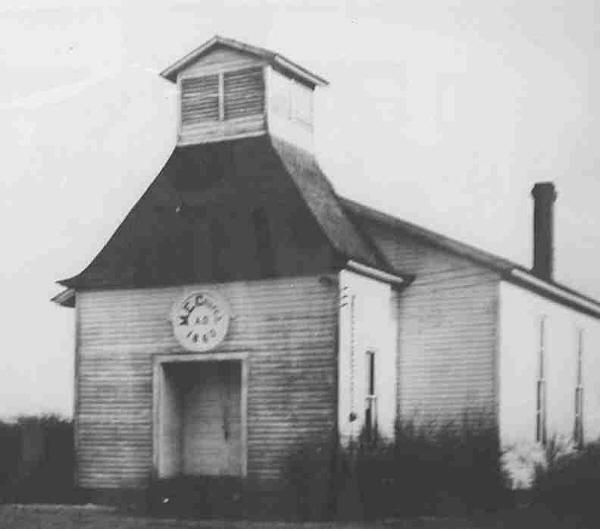
Kansas Methodist Church

Kansas School - 1936 classes
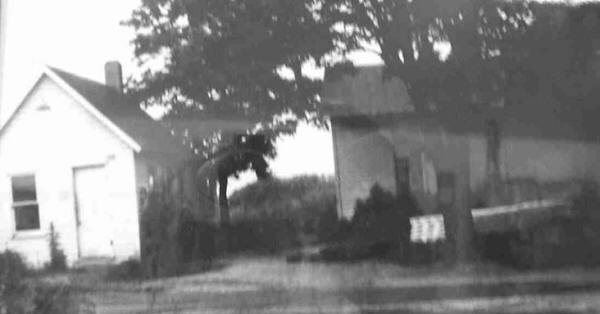
Kansas Home and Grocery
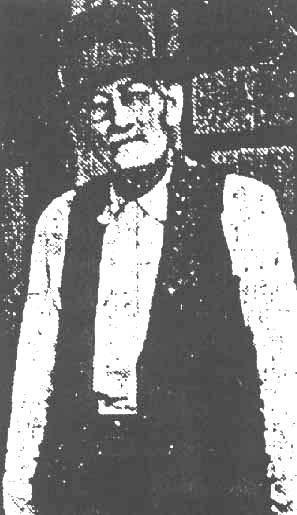
Val Ulrey, Grocery Owner and Blacksmith
Died as he was being taken from his home
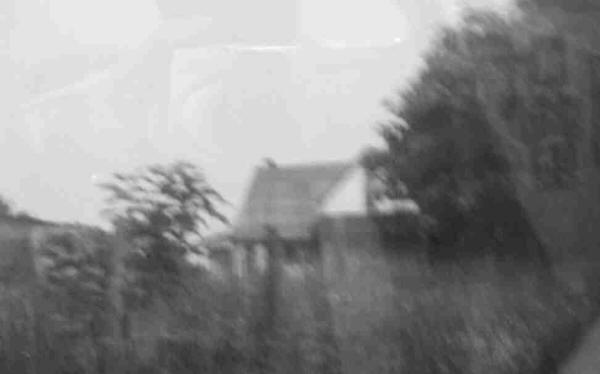
McKee Farmhouse

Ohio Ridge Church
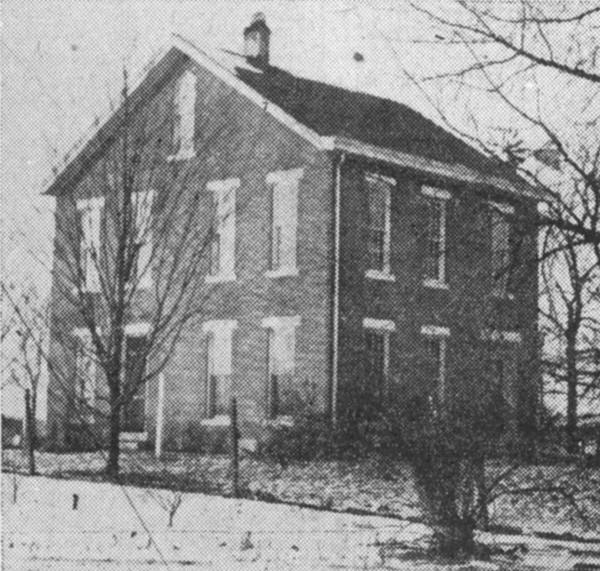
Parmalee House - Used as the new Camp's Headquarters when first began
James D. West www.IndianaMilitary.org